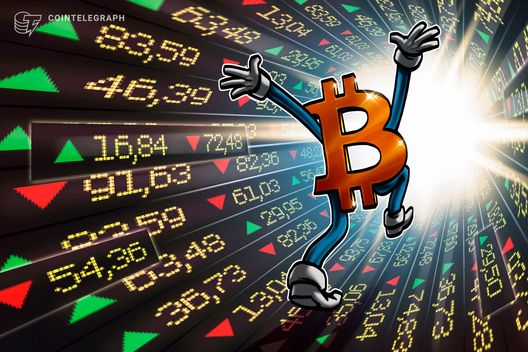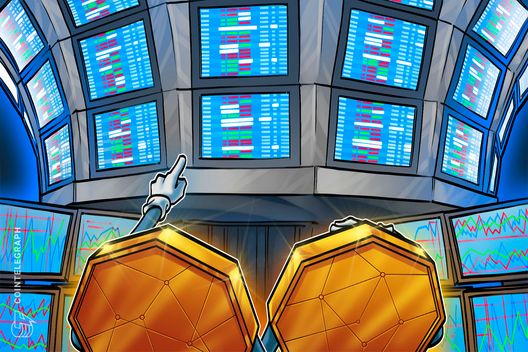Muni bond market stirred, not shaken as Silicon Valley Bank collapses
8 min read
Municipal bond market participants are casting a wary eye at U.S. regional banks after the collapse of Silicon Valley Bank of Santa Clara, California, but there was no sign of widespread panic.
SVB closed its door Friday after investors lost confidence in the bank’s failing financial performance. It was the largest bank failure since the 2008 financial crisis.
For the municipal bond market, even more uncertainty has been introduced as the Federal Reserve now has to weigh tweaks to its monetary policy and a possible change to its stance on interest rates and inflation as the situation unfolds. The Fed was expected to consider a 25- or 50-basis point hike when it meets next week, but now may hold rates, some analysts say.
Regional bank stocks came under pressure in the equities market Monday as cautious investors sold off some of their holdings. Treasury bond yields dropped in early trading amid a flight-to-quality bid while munis followed, with yields lower across the curve with better trading, especially on the front end.
Municipal bond yields fell 12 basis points on the short end, according to the final read of Refinitiv Municipal Market Data’s triple-A 5% general obligation bond scale.
“Government intervention sent bonds soaring in a flight-to-quality fashion on steroids,” Peter Franks, senior market analyst at Refinitiv MMD, said in a morning comment. “Stocks initially down have begun to recover as details of bailout are parsed. Munis once again see yields lower and once again not in lockstep with Treasuries.”
Muni maturities from 2024 to 2027 were bumped 12 basis points, while the 2028 maturity was bumped 10 basis points and the 2029 to 2053 maturities were bumped six basis points. The one-year muni yielded 2.72% while the two-year was yielding 2.71%, according to MMD, which had the 10-year yielding 2.45% and the 30-year at 3.42%.
The 10-year Treasury note was yielding 3.59% while the 30-year bond was at 3.71%.
José Torres, senior economist at Interactive Brokers, noted the bond market implications. “Fears about potential bank failures similar to SVB and Signature Bank have sparked an investor stampede into the safety of Treasury securities, while complicating the Federal Reserve’s monetary tightening just months after inflation embarked on a painful resurgence,” he said in a Monday market note.
“Investors flocked to safe-haven assets with yields across the Treasury curve falling like thunderstorm raindrops from the sky,” he said.
“The fears surged despite the Treasury Department, the Federal Reserve and the FDIC stating that SVB and Signature Bank clients will receive their full deposits,” he said.
First Republic Bank saw a decline of about 65% in its stock value as of Monday morning, the Wall Street Journal reported.
The fair value of First Republic’s financial assets were $26.9 billion less than their balance-sheet value, the paper said. The bank’s financial assets included “other loans” with a fair value of $26.4 billion, or $2.9 billion below the $29.3 billion carrying amount, the Journal said.
“So-called held-to-maturity securities, consisting mostly of municipal bonds, had a fair value of $23.6 billion, or $4.8 billion less than their $28.3 billion carrying amount,” according to the Journal.
David Petrosinelli, senior fixed-income trader with InspereX, said he thought the Fed, Treasury and FDIC were wise to make their announcement over the weekend, before the opening of trade on Monday.
“That’s a major positive for the markets,” he told The Bond Buyer.
He added, however, the liquidity facility for use by both insured and uninsured depositors, brings up the issue of moral hazards risk.
“But ultimately at the end of the day, the larger pressing issue of having a run on smaller and mid-sized type of banks needed to be addressed and the feds did a nice job of doing that,” Petrosinelli said.
Still, he said, it would make it more difficult to gauge the health of the economy.
“It does muddy the waters a lot because we had an employment number on Friday and we have some big economic reads on inflation this week and I think a lot of that is just going to get lost in the noise of what’s going on with Silicon Valley Bank and Signature and maybe some others that we’re hearing about today.”
Petrosinelli noted the increased uncertainty about what the Fed will do.
“Goldman Sachs made a call yesterday, saying the Fed was not going to raise rates in March, basically saying they’re done for the foreseeable future,” he said. “I think that’s really going to be a tough sell for the market, particularly if the inflation aggregates come in steamy because the Fed has to detach or bifurcate the inflation picture and the underlying roots of it to what’s going on with a seemingly contained in the small- to medium-sized regional banks.”
“These seem to be relatively isolated instances — not to say that there won’t be others that will emerge — but at the end of the day [the liquidity facility] does quell concerns and I think that over the next couple of days we will transition a little bit away from this story back into fundamental econometrics, which are that prices are too high, but coming down slowly, and the Fed’s going to need to do more,” he said.
“The bank crisis illustrates how quickly investor fear can shift among issues and how the Fed’s efforts to curtail inflation can quickly become complicated by market conditions,” Torres said.
“For the Fed, the crisis comes at a pivotal time — investors are looking ahead to tomorrow’s consumer price index data and releases later this week for retail sales and the producer price index to assess whether the recent upswing in inflation is a persistent and widely entrenched issue,” he said. “Regardless of this week’s economic data, however, it’s likely that the Fed has landed between a rock and a hard place as it must balance financial stability with its efforts to curtail inflation.”
SVB, which had $172 billion in deposits, collapsed after it was forced to sell long-duration bonds at a loss to meet withdrawal demands. On Sunday, regulators also shut down Signature Bank, which had more than $88 billion of deposits after it was hit with withdrawal requests Friday.
It was unknown if SVB held any municipal bonds in their portfolio.
On Monday, President Joe Biden sought to reassure the American public that the bank’s collapse didn’t portend a wide financial calamity.
Speaking from the White House, Biden said that deposits at U.S. banks “will be there when you need them.”
The president added he will ask Congress and bank regulators to strengthen rules and oversight for banks to avoid further runs on banks and panic in the financial industry.
Treasury Secretary Janet Yellen, Federal Reserve Chair Jerome Powell and Federal Deposit Insurance Corp. Chair Martin Gruenberg issued a joint statement Sunday saying they were taking action to protect all depositors.
“Depositors will have access to all of their money starting Monday, March 13. No losses associated with the resolution of Silicon Valley Bank will be borne by the taxpayer,” the statement said.
“This step will ensure that the U.S. banking system continues to perform its vital roles of protecting deposits and providing access to credit to households and businesses in a manner that promotes strong and sustainable economic growth.”
They also announced a similar exception for Signature Bank in New York, which was closed Sunday by the state chartering authority.
“All depositors of this institution will be made whole. As with the resolution of Silicon Valley Bank, no losses will be borne by the taxpayer,” the statement said.
“The U.S. banking system remains resilient and on a solid foundation, in large part due to reforms that were made after the financial crisis that ensured better safeguards for the banking industry,” the statement said. “Those reforms combined with today’s actions demonstrate our commitment to take the necessary steps to ensure that depositors’ savings remain safe.”
Padhraic Garvey, CFA, regional head of research at ING, said in a market note the troika of officials who met over the weekend were aiming to calm investor nerves.
“We show that SVB is an outlier in many ways, but it is too early to call the all-clear on the sector; it’s a risk from the aggressive rate-hiking environment,” he said. “So far the system looks fine, but it needs to be treated with caution ahead, just in case.”
He noted, while there were echoes of the global financial crisis, there were also material differences.
“The demise of Silicon Valley Bank was fast, super fast. It started on Wednesday as SVB took a $1.8 billion loss on a forced $21 billion bond liquidation from its available-for-sale portfolio; it then announced an intention to raise $2.25 billion in capital to help plug the gap. Thursday then saw material deposit outflows, and the SVB stock collapsed. Inevitably, with trust gone, Friday saw SVB go down. The regulators stepped in, with the FDIC acting as the receiver in a clean-up exercise. An attempted auction process began over the weekend, seeking suitors.”
Wells Fargo Investment Institute said in an investor alert Sunday the “two bank failures late last week likely will raise questions about some small- and mid-sized banks to start the new week.”
The Institute said that what’s notable about the two failed banks “is their overexposure to assets whose values come under pressure as interest rates rise and their concentrated business models. However, we view systemic risk to the overall banking industry as low, because most banks are well capitalized and have more diversified balance sheets.”
California Gov. Gavin Newsom lauded the quick response to the crisis.
“The Biden administration has acted swiftly and decisively to protect the American economy and strengthen public confidence in our banking system,” he said in a statement.
“Their actions this weekend have calmed nerves, and had profoundly positive impacts on California — on our small businesses that can now make payroll, workers who will get their paychecks, on affordable housing projects that can continue construction, and on non-profits that can keep their doors open tomorrow,” Newsom said.
ING’s Garvey noted there has already been a degree of contagion, on fears of replication in other banks.
“All banks hold securities, for various reasons. In the traditional banking model, deposits raised are used to underwrite loans. Banks have the option to invest in bonds as an alternative to writing loans, and this is most applicable where, for whatever reason, there is either not enough demand for loans, or the terms on writing loans are less appealing,” he said. “Unusually, SVB employed far more of its deposit base in long-dated bonds than in writing loans. This meant it was more susceptible than most banks to the performance of its bond portfolio.”
He said that while the Fed and Treasury were ahead of the game, “that does not mean that there aren’t other SVBs out there. Treasury Secretary Janet Yellen in fact alluded to the possibility that there may indeed be some, as she noted on Friday that the Treasury was monitoring some other banks.”
Garvey said some banks will come under pressure at this stage of the interest rate cycle.
“The Fed has hiked from zero to near 5%. Moreover, starting from zero rates means a bigger rate sensitivity to hikes (think duration). If some balance sheets get eroded by a ratcheting down in market valuations, and become an eyesore, before you know it there are trust issues to deal with. Big banks are less affected; they have to meet tougher hurdles to begin with. But there could well be further stress in the smaller bank sector,” he said.
“This could and indeed probably should all blow over. But we need to also let a bit of time pass before we can be sure,” Garvey said.







